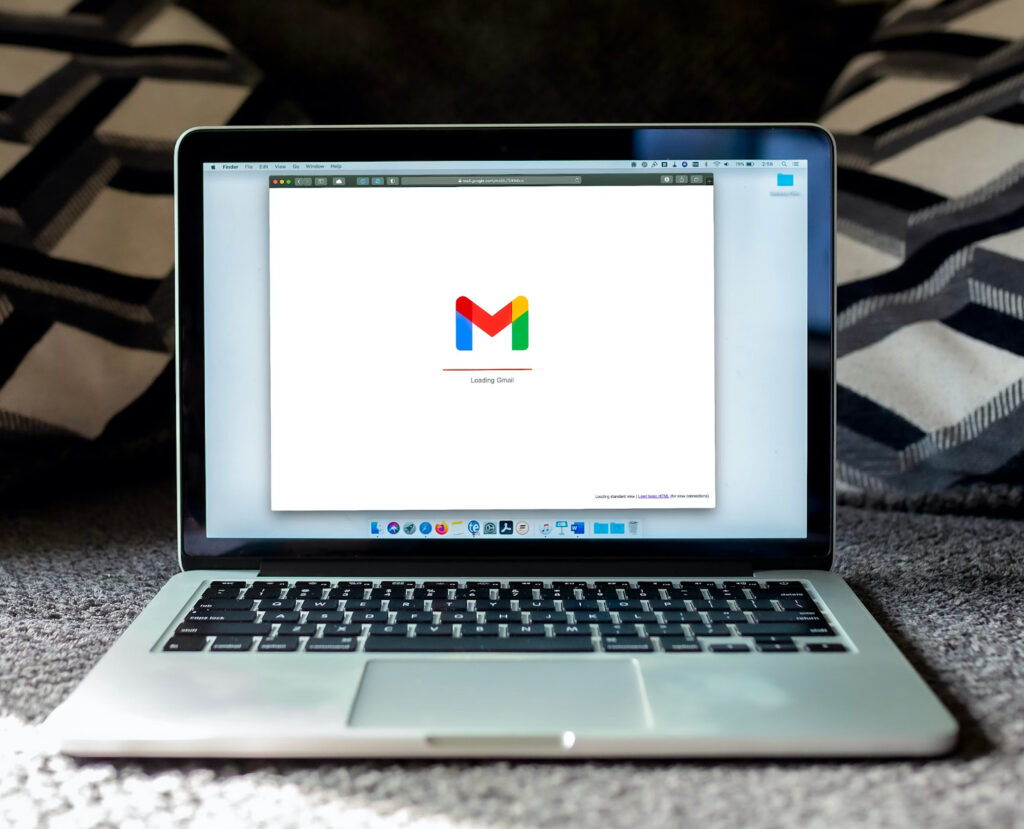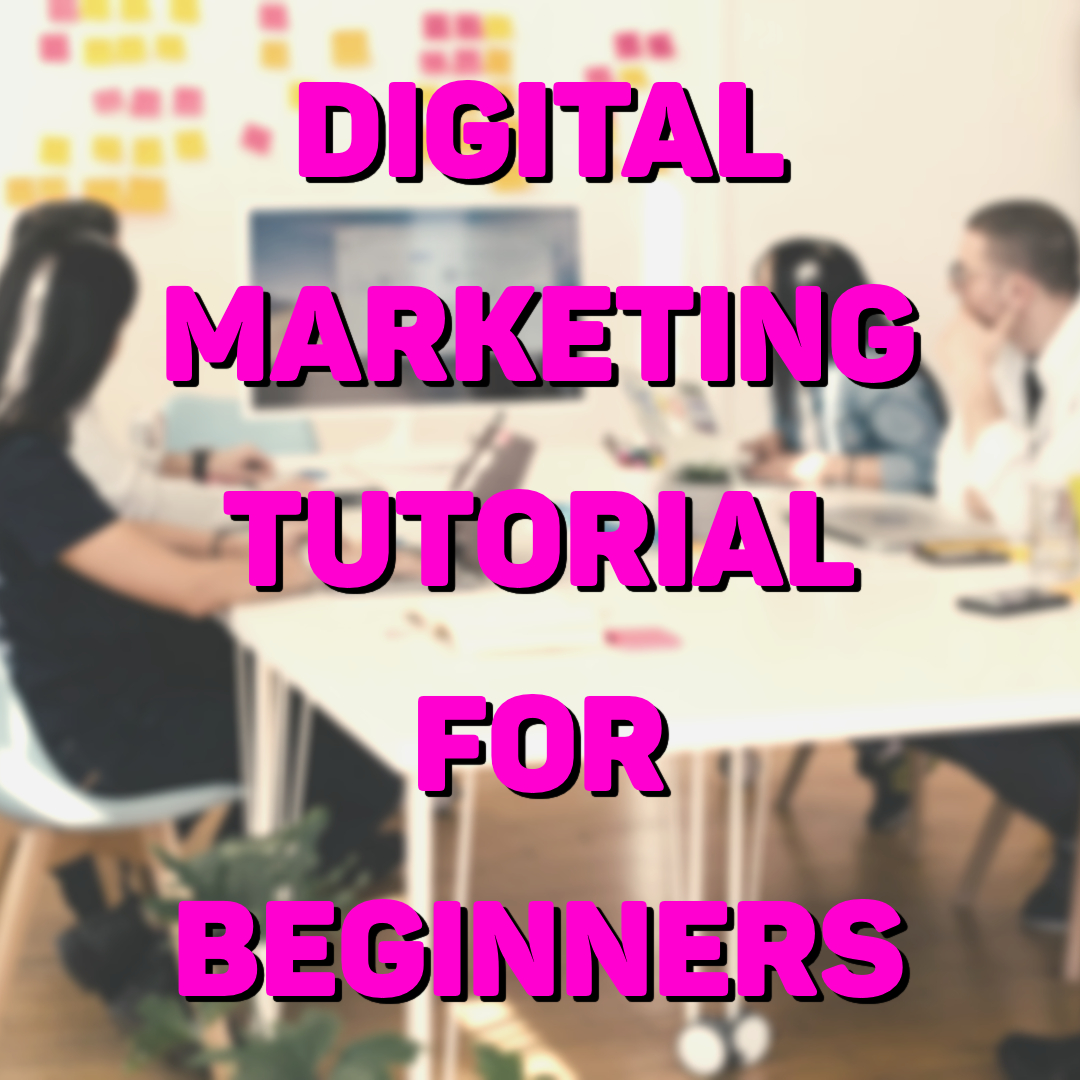There’s so much to get your head around when growing your business that things like digital marketing can too often take a backseat. In reality, though, there’s a good reason why big businesses now treat the online sphere like their own personal playground – sales just aren’t possible unless you shout loud into the digital world.
Of course, great products are still a crucial element of success. But, with the digital advertising market now estimated at around $460bn, and with 63% of businesses increasing their digital marketing budgets in the last year alone, getting to grips with digital marketing is very much a case of needing to get on the horse or go home.
This is true no matter how great your products are in their own right, especially considering that 76% of consumers look for a brand online first. By making yourself more visible, and specifically targeting relevant audiences in a way that you can’t in real life, well-done digital marketing can transform your sales potential.
Digital Marketing Guide for Beginners
In this comprehensive digital marketing tutorial for beginners, we’ll teach you everything you need to know to ensure that your business shines online.
Understanding the Basics of Digital Marketing
Given that you’re a switched-on individual living in the 21st century, we won’t patronize you with digital marketing definitions, but there’s a big difference between knowing what digital marketing is and knowing how to implement it effectively. That’s what we’ll be focusing on here, and it starts with taking a deep dive into digital marketing basics, even if you think you already know what those are.
From social media marketing to content and beyond, getting your digital marketing strategy right is essential for building a successful, easily visible online presence. And to do that, you’re going to need to consider basics like –
Why Does Digital Marketing Matter?
Regardless of the size or level of your business operations, digital marketing efforts including building a high-quality website and a social media presence are crucial to reaching new audiences, gaining a competitive edge, and generally making your brand more accessible.
The ability to track online interactions from start to finish can also make it easier to tap into what customers want, and which sales techniques result in the most conversions. As well as creating the highest ROIs of most marketing methods, digital marketing therefore offers valuable insights that can also spill into physical marketing and beyond.
What Should A Digital Marketing Budget Cover?
Digital marketing brings the benefit of the highest marketing-based ROIs with a ratio of around 5:1. It’s also fully adaptable to your decided budget. Expenses that you’ll want to factor in when budgeting for digital marketing should include –
- Social media marketing
- Content marketing
- Email marketing
- Search engine optimization (SEO
- Pay-per-click advertising (PPC)
- Search engine marketing (SEM)
- Influencer campaigns
Step-by-Step Guide to Your First Digital Marketing Campaign

The speedy implementation of your first digital marketing campaign is crucial for ensuring that consumers can find you. To ensure the success of a digital marketing campaign that needs to go live as soon as possible, it’s crucial to take steps such as –
- Choosing a campaign goal: Digital marketing needs to have an overall campaign goal, which may include boosting sales, expanding audiences, or even securing loyal customers.
- Keeping track of campaign success: Fully trackable metrics are the best things about digital marketing, and can be tracked using key performance indicators (KPIs) that consider what you want to achieve, alongside any relevant digital marketing metrics. For instance, a sales-based digital campaign might look at website visits versus online conversions.
- Setting a budget: Setting the right digital marketing budget is key to high ROIs, and should see you considering campaign goals (e.g. the sales you hope to achieve) alongside metrics including cost of advertising and customer acquisition cost (CPA). By then analyzing average digital market spending, and also determining the digital avenues you intend to advertise on, you can start to understand roughly what a realistic budget here might look like.
- Defining your audience: With audience specifics dictating the digital mediums with which you’ll find success, it’s crucial to know who your audience is, what they want, and where they’re most likely to interact online.
What Should Appear in Your Campaign Toolkit?
With 58% of small businesses already taking care of digital marketing, beginners need more than just a great campaign strategy. They also need a competitive edge, which can be best achieved through the use of specific digital marketing tools, such as –
- MailChimp: MailChimp is a marketing automation email platform that offers a free plan for businesses with less than 2000 subscribers, and which makes it easy to develop, send, and analyze all-important email marketing campaigns.
- HubSpot: Named a leader in the 2023 Gartner Magic Quadrant, HubSpot is a CRM platform that provides digital marketing tools that aim to ‘bring your entire marketing funnel together’ across crucial digital marketing services including blogging, SEO, email, marketing automation, and more.
- MobileMonkey: MobileMonkey is a chat automation tool that makes it easier for customers to interact with you via a range of mediums, including Instagram DMs, SMS, live chat, and Facebook Messenger, from one simple platform.
Other tools, including project manager Trello, and social media tool, Hootsuite, can also help you to more easily manage things like post schedules, digital marketing teams, and the analysis of what your digital marketing efforts have to tell you.
Decoding SEO: A Beginners’ Tutorial

Search engine optimization (SEO) refers to how your website or social media presence is received by the search engine Gods, and it’s a crucial element of getting your digital marketing seen. After all, with 75% of people never scrolling past Google’s first page, and with high-ranking organic listings receiving about 90% of search engine clicks, if Google isn’t willing to recommend what you’re doing online, then you might as well not be doing it.
What Does SEO Include?
Through SEO, brands must work to align with and impress search engine algorithms. Most commonly, this will involve key focuses such as –
- Keywords: The use of keywords in everything from web content to page titles and meta descriptions can make it easier for Google to promote your page to relevant searches. This can help hugely with new customer acquisitions, and relies on keywords that can be selected either logically (e.g. ‘digital marketing for beginners’ for this post), or using tools like Google’s keyword planner.
- Link building: Search engines will only promote legitimate and useful websites. Inbound links from authoritative sites across guest posts, brand mentions, and more can provide that authenticity. External links to trusted sources on your blog or website can also help to prove your value in any given industry.
- Content creation: The creation of additional content including ebooks, blogs, and videos can all help to prove your value to a search engine, as long as they’re written using original, creative, keyword-laden copy that includes plenty of images and broken-up text.
- Website optimization: Google is never going to promote slow-loading, poorly performing websites. Optimizing your website for speed and usability is essential for high rankings, and requires focuses like image compression, improved user experiences, and website hosting on a fast-loading platform.
The Importance of SEO: A Statistical Study
Businesses enjoy an average 2.8% increase in revenue off the back of SEO investments, and that’s not the only statistical reason to invest in this area. Others include –
- Top organic search results receive an average 19xs more clicks than top-paid results
- 92.3% of the top-ranking domains in an SEMRush study had at least one backlink
- Posts containing keywords in their URL have a 45% higher click-through rate
- Companies that publish blog posts receive 55% more traffic
- 88% of marketers who already invest in SEO intend to allocate more or maintain the same spending in 2023
Mastering Social Media Marketing: A Tutorial For Beginners
<iframe width=”560″ height=”315″ src=”https://www.youtube.com/embed/I2pwcAVonKI?si=ZUw9jabdvx6z9iej” title=”YouTube video player” frameborder=”0″ allow=”accelerometer; autoplay; clipboard-write; encrypted-media; gyroscope; picture-in-picture; web-share” allowfullscreen></iframe>
With more than 4.74 billion people currently signed up to social media, brands looking to expand their reach, create loyal audiences, and ensure well-placed ads could all benefit from social media marketing.
While a digital marketing focus like SEO is fairly universal, social media success is more variable, and should factor for –
- Your target audience
- Relevant social platforms
- Paid vs. organic posts
- Influencer campaigns
- And more
This can be difficult to get your head around, which is why we’re going to break down the basics to get you started.
Which Social Media Platforms Should You Use?
Each social media platform provides different benefits, different audiences, and different capabilities. Understanding who you’re targeting and your intentions for doing so is crucial for making the right choice. Ultimately, though, you’ll also want to consider success rates across the different social media platforms most popular amongst marketers as follows –
- Facebook: Facebook is the most-used social platform by marketers worldwide (90%), and offers access to 70% of American adults with an average age of 25-34.
- Instagram: Instagram is the second most-used platform by marketers (80%), and offers access to 2.35bn users with an average age between 18-34.
- TikTok: TikTok is now the preferred social platform for over 5 million businesses, and offers access to over 1bn active users, 38.9% of whom are aged 18-34.
What Should Your Social Media Strategy Include?
The specifics of your social media strategy will largely depend on your digital marketing goals and your chosen platform(s). For instance, reels that take up 30% of user time on Instagram are essential, while paid ads are far more commonly utilized on a platform like Facebook.
Whatever the specifics of your social media position, though, an effective social media digital marketing strategy should factor for –
- High-quality content: Social media shares are essential to success, and high-quality uploads, reels, and video content are key to that.
- Consistent uploads: Elusive social media algorithms, and users alike, value regular social uploads, which should tally at around 1-2 posts a day, preferably uploaded at peak social media usage times such as 6 pm-9 pm.
- Hashtag keywords: Like with SEO, keywords play a huge part in social media visibility, with well-thought hashtags making brands more accessible, more shareable, and easier to interact with.
- Always-on engagement: Social media is unique in that it’s not a one-way digital platform. Instead, success here comes from building a community, and that requires regular interactions including both replies to your comments/@-mentions and visibility in the comments section of other relevant companies/creators.
- Influencer interactions: Businesses make around $5.20 for every $1 spent on social media influencers who will promote their product and direct traffic to their page.
Email Marketing: Basics for Digital Marketing Novices
69% of marketers use email marketing, and that’s hardly surprising considering that well-thought, properly targeted emails provide a return of around $40 for every $1 spent, making email marketing a top contender for ROI. In many ways, this value is a direct result of the fact that email marketing is the most proactive digital marketing option. But what does a successful email marketing strategy look like?
Types of Email Marketing to Consider

While email marketing doesn’t involve as many choices as, say, social media, it does still involve a few different avenues, including –
- Promotions
- Newsletters
- Welcomes
- Retargeting
- Surveys
- Etc.
Ensuring Email Marketing Open Rates
With average open rates of around 21.5% across industries, email marketing is a great way to ensure conversions. Yet, with bounce rates also resting at around 10.28%, it’s not enough to assume that all emails will result in sales. Instead, brands need to make sure of that by factoring in –
- Personalization: Software like MailChimp makes it possible to personalize email subject lines and can increase open rates by around 26%. Personalized ads based on things like previous searches can also drastically increase click-throughs.
- Remember your call to action (CTA): Chatty, informal newsletters can build customer relationships, but make sure to include a CTA that somehow links back to your website or social media presence.
- Track email success: Tracking success indicators like open and bounce rates, as well as click-throughs and even unsubscribes, can help you to more easily tailor email marketing that’s well suited to a receptive, engaged audience.
Getting Started with Content Marketing: A Beginners’ Guide
By providing value to your customers without being overly promotional, content is a guiding force for good SEO, and it’s an area of digital marketing that’s currently utilized by 73% of B2B marketers, and 70% of B2C marketers. With blogs, YouTube channels, and more still relatively new in the grand scheme of marketing, content is also one of the fast-growing marketing channels of recent years, and should see brands considering avenues such as –
- Blogs
- YouTube channels
- eBook creation
- Infographics
- Press releases
- Case studies
- Web copy
- Etc.
What Does Good Content Look Like?

Good content can ultimately be categorized by ‘5 C’s’, which are –
- Consistency: From creating a consistent brand voice to uploading content consistently, you want your blog posts, videos, etc. to prove that consumers can trust you to produce valuable content, delivered in a reliable package.
- Context: Content should be developed with buyer personas, peak consumption times, and forms of consumption in mind. If most of your consumers are young people who view content on their phones, for example, then blog posts will likely be better received than downloadable eBooks.
- Cohesion: All of your content should share beliefs, priorities, and general subject focuses. If content starts to contradict itself, even if that content appears across different platforms, it could lose you loyal custom.
- Credibility: Quoting incorrect or even outdated sources can undo any marketing benefits from content. Equally, not using statistics at all will prevent you from seeming like a credible source. Instead, fact check and thoroughly research your content topics to ensure credible, informative content at all times.
Analysis and Reporting: A Crucial Part of Digital Marketing
It’s not enough to simply put the best digital marketing plans in place – you also need to measure their effectiveness. Analysis and reporting means comparing metrics alongside pre-determined KPIs to monitor campaign efficiency or identify necessary changes.
Social media platforms and even your website can be valuable in this sense, as they provide inbuilt insights that your team could turn into metrics. That can be complicated, however, and true analysis or reporting is best achieved using tools like Hootsuite or SEMRush, which provide reliable, clearly outlined metrics, set directly against KPIs as follows –
- Online presence vs online sales
- Interactions vs. conversions
- Social media uploads vs. website visits
- Email retargeting vs repeat sales
- And more
In each instance, you’ll be able to paint the most reliable picture of what your digital marketing efforts are enabling in real time, making it easier to engage, convert, and provide lasting value to your consumers. For brands that track metrics over time, the ability to identify things like sales dips and increases can also make for more effective digital campaigns year-on-year.
Seeing as you’ll be unable to tell whether you’ve reached your digital marketing goals or not without this analysis, you could even argue that it’s one of the most essential elements of digital marketing done well.
Conclusion
The sheer amount of digital marketing avenues and priorities can feel overwhelming when you’re first getting started, but with more and more consumers prioritizing business interactions online, this is something brands need to get to grips with whether they’re intending to reach global audiences or boost local sales.
Whether you use this guide to help you take care of digital marketing in-house, or have the budget to outsource priorities like content to experienced parties (as done by around 50% of marketers), there’s no getting around the need to put digital marketing at the forefront of your marketing efforts in 2023 and beyond.

